Many ancient rulers have been incorporated into our history books, novels, movies, and video games. If you're anything like me, you would have first heard of Genghis Khan and Attila Hun while playing Age of Empires. The conquests led by these men immortalized them in the sands of time. What made them so good (or terrible)? Here are a few ancient conqueror stories that have the names etched in our minds.
Alexander the Great
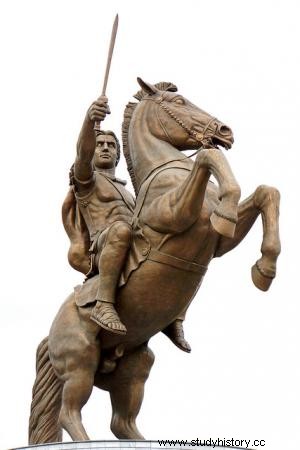
Alexander III of Macedon or Alexander the Great was the ancient king of Macedonia and one of the greatest military leaders. Born in Pella in 356 BC, his father was King Philip II and mother Queen Olympias. Legend has it that Zeus was his father.
At the age of 12, Alexander tamed the wild horse Bucephalus, who would be his companion in almost every match. As a 13-year-old, he was taught by Aristotle in science, philosophy, literature and medicine. He was 16 years old when his father left him in charge of the Kingdom and went to battle. His first conquest was in 338 BC. when he fought against The Sacred Band of Thebes at the Battle of Chaeronea. It was in 336 BC. that Alexander became king (his father was murdered by the bodyguard). Persian and Greek forces were crushed by Alexander. Soon the cities of Sardis, Miletus and Mylasa fell. It was in Gordium that he met the legendary Gordian Knot, a group of tightly wound knots attached to an ancient chariot. According to legend, the one who wound the knot would be the ruler of all Asia. Unable to untie the knot by hand, Alexander cut it with his sword and took victory.
The cities of Marathus, Aradus, Byblos and Sidon were the next to be conquered. He took the island of Tire in 332 BC. at the Battle of Tire. After conquering Egypt, he named a city that bears his name to this day:Alexandria. In 331 BC. he defeated King Darius and became king of Persia. To gain Persian loyalty, Alexander adopted Persian clothing, customs, and beliefs. This did not go well with Macedonians, and many began to plan his death. Alexander's paranoia led to the killing of some of his respected generals.
Alexander died in 323 BC, aged 32 years. Many historians believe that he died of malaria, while others claim that he was poisoned. He appointed no successor, and his empire fell apart after his death
Charles the Great
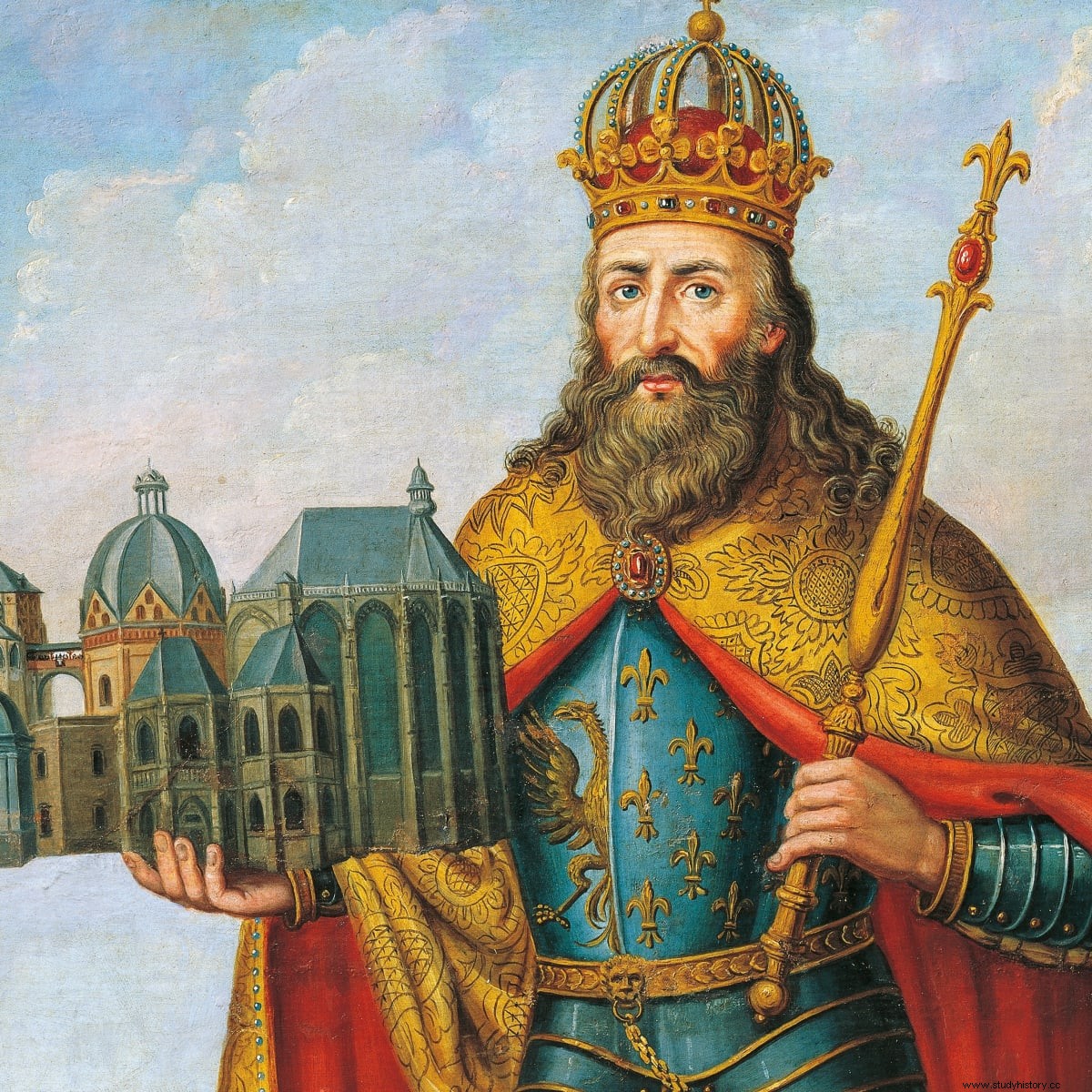
Charlemagne or Charlemagne was an emperor who ruled most of Western Europe from 768 to 814. Christianity survived in the West because of his perseverance and many refer to him as the Father of Europe.
Charles was born in approx. 742 to Bertrada of Laon and Pepin the Short. His father was the king of the Franks, and at his death in 768 the kingdom was divided between Charles and his brother, Carloman. Carloman died in 771, and Charles became the only king of the Franks. His ultimate mission was to unite all the Germanic tribes and promote Christianity. The Lombards (in Italy), the Avars (in Austria and Hungary) and the Bavarians were conquered and Christianity imposed. In 782, during the World Massacre, about 4,500 Saxons (Germanic tribes who worshiped pagan gods) were slaughtered. The rest were forced to convert to Christianity, and all who resisted were killed.
His defense of Christianity led him to give money and land to the church and protect the popes. In recognition of his power and relationship with the church, Charles was crowned Roman emperor by Pope Leo III in 800. During his reign as emperor, Charles promoted education, the Carolingian Renaissance (renewed emphasis on scholarships and culture), made economic and religious reforms, and initiated the Carolingian miniscule (spelling, later to become the basis of modern European printed alphabets). Apart from education, he also showed great interest in athletics.
Charles crowned his son Louis the Pious as co-emperor in 813. When Charles died the following year, Louis became sole emperor. He was buried at the Cathedral of Aachen.
Attila Hun
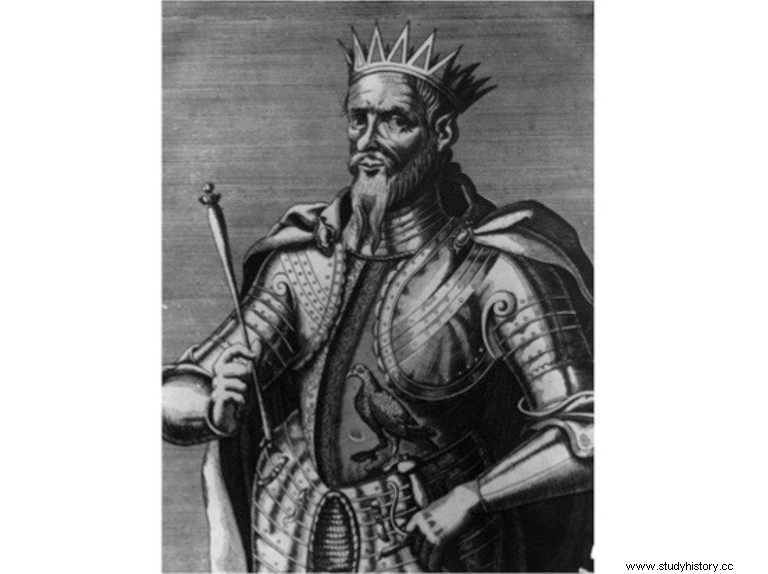
Attila was the king of the Huns (nomadic peoples who migrated to Europe from Central Asia in 370 AD). His reign, which stretched from 434 AD. to 453 AD, was filled with bloody conquests, so much so that his name was feared rather than honored.
Attila's exact date and place of birth is unknown. Records show that his father was Mundzuk, brother of Kings of the Huns, and he had a brother named Bleda. His mother is still unknown. In 434 AD, when the king (their uncle) died, both brothers ruled the Huns together. Attila had no precise religious beliefs. However, he had great respect for prophecies.
Their conquests began in 437 AD. when they invaded and slaughtered the Burgundians in France. The Huns were allies of the Western Roman Empire, while the Easter part resisted their alliance and were at war with the Huns much of the time. Although a peace treaty was signed in 435 AD, the Huns attacked the Eastern Roman Empire in 441 AD. When Roman troops were called in from Sicily, the females withdrew with an enormous amount of prey. Many cities were destroyed and civilians killed during the invasion. Bleda died after the retreat - it is speculated that Attila had him killed to become the female's sole ruler.
In 450 AD. led a series of events that led the Western Roman Empire to turn against Attila. When Attila was denied the hand of Honoria, the sister of Emperor Valentinian III, he waged a war against the Western side. Valentinian teamed up with many of Attila's enemies to take him down and became known as the Battle of the Catalaunian Plains. A humiliating defeat, Attila was forced to retire. It was in 452 AD. that he again marched into the empire and destroyed entire cities. When he met the Bishop of Rome Leo I, Attila was persuaded to retire and leave what was left of the Roman Empire in peace.
A year later, Attila married Ildico, the last of his many wives. He was found dead on his wedding night, after much partying and celebration. It is still unknown if Ildico murdered him or if he died of natural causes. The location of his grave is unknown because he ordered it to be kept secret. The men who buried him were killed to keep the secret safe, and to this day Attila's resting place is unknown.
Genghis Khan
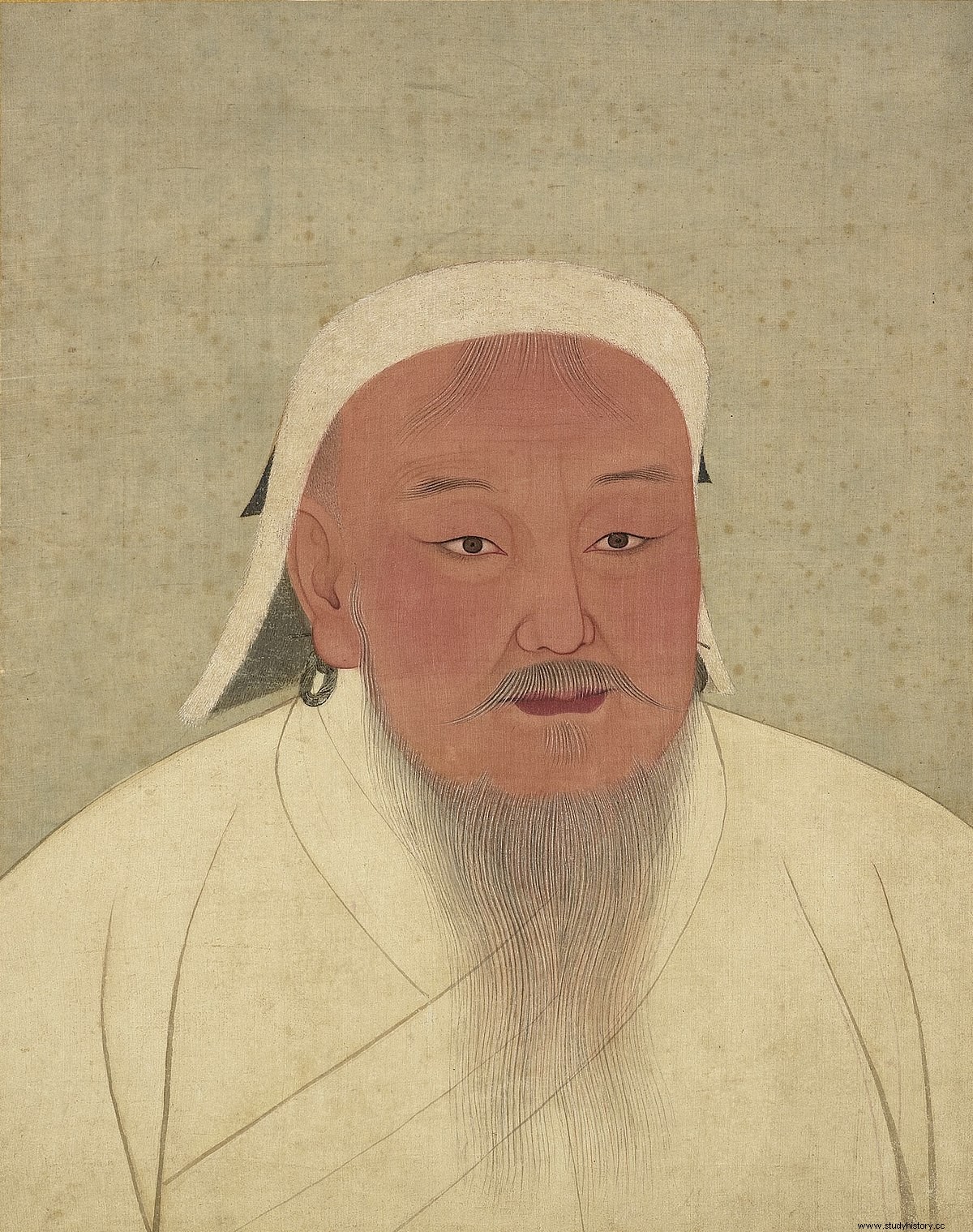
Genghis Khan was the founder and ruler of the Mongol Empire in the thirteenth century. At the time of the birth of Genghis Khan (c. 1158), Mongolia was ruled by different tribes. Khan's father, Yesukai, was a prominent ruler. Khan was born Temujin, named after an enemy his father slaughtered (children were often named that way to celebrate the fathers' triumph.) When Temujin was nine, Yesukai was poisoned to death by his enemies. The family's power crumbled as his father's many followers left them. War between the tribes and the clans was an everyday occurrence, and the family had to survive attacks from their father's enemies.
Temujin's transition to power began when his wife Börte was kidnapped in 1178. The rescue gave him power and fame. In 1186, Temujin became the khan of the Mongols. Many details about his life in the coming years are sketchy. Records show that in 1197 the Torghul (Khan of the Keriates) and Temujin defeated the Tatar clan. In 1202, Temujin defeated the entire Toghrul clan when he learned of his betrayal to have him assassinated. After the fall of Keriates, Temujin conquered the Tatars, Merkits, Naimans, Mongols and Uyghurs. He was soon considered the sole ruler of the Mongol territory in 1206 and was named 'Genghis Khan'.
What led to Genghis Khan coming to power was that once he defeated a clan, he would not have them slaughtered or driven away from their land. Instead, he would take them under his leadership and protection, thus integrating them with his growing army and tribe. The resources he received from his conquests were divided between his troops. Men of faith and craftsmen were ordered not to be harmed during the war. Genghis Khan put loyalty over family ties. Former enemies of him, after defeat, would achieve the position of generals in his army because of their loyalty. And rather than imposing a single religion on the entire clan, he gave his people religious freedom to follow whatever deity they wanted, while he himself believed in shamanism and consulted Buddhist monks, Muslims, and Christian missionaries. All these unconventional practices led to a harmonious empire called the Monoglian Empire. At the time of his death, the empire ran from the Caspian Sea to the Sea of Japan. He is also credited with bringing the Silk Road under a single cohesive political environment that ensured an increase in communication and trade between the West, the Middle East and Asia.
Although the exact cause of death is unknown, most historians agree that a horse threw him to the ground, after which the injuries led to his death in 1227. Khan requested that the exact location of his grave be kept secret. Despite the name he created for himself, he did not allow portraits or sculptures to be made of himself. His first portrait appeared years after his death, and his appearance is mostly speculated.
Timur Tamerlane
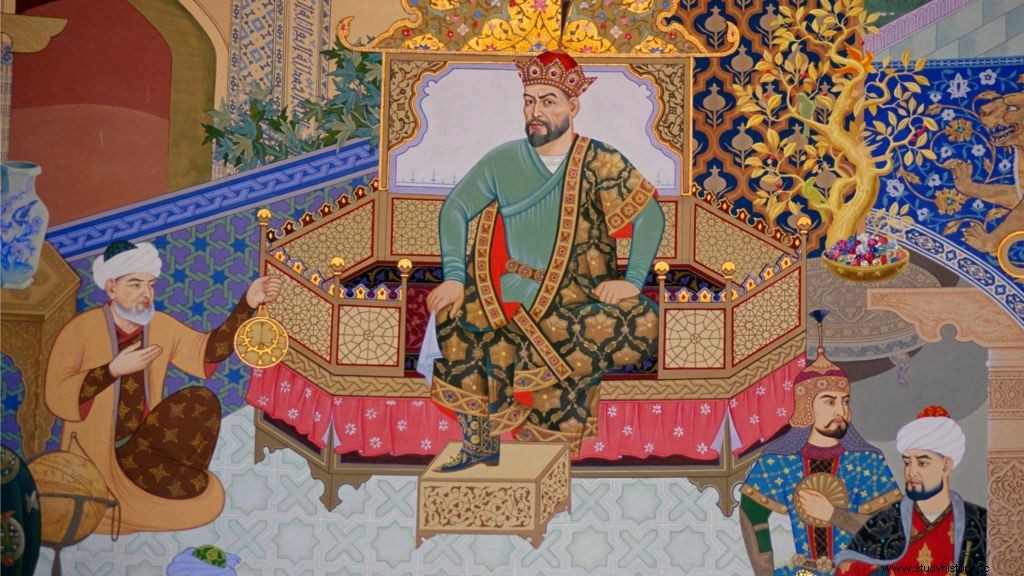
Timur was a Turkish-Mongol ruler who wandered around Mongolia long after Genghis Khan. He was the founder of the Timurid Empire and the Timurid Dynasty. During his reign, Timur's goal was to reunite the entire Mongol Empire that had split after the death of Genghis Khan.
Timur was born to Taraqai, a nobleman of the Barlas tribe (nomads in southern Samarkand). His businesses began at a young age - stealing, violence and other shady conditions. His inability to walk properly with his right leg or lift his right arm gave him the name Timur-i-Leng, a nickname meaning 'Timur the Lame', which was later misinterpreted as 'Tamerlane' by Europeans.
His greed for power resulted in him betraying allies and merging with the enemies of his former allies. Transoxiana fell to its list first, and then the Persian cities were plundered. Just as Charlemagne believed in Christianity, Timur believed that Islam was the only true religion. During his reckless slaughter, Timur allegedly spared artisans and artisans, but not out of mercy. They were forced into his homeland, Samarkand, where they built the capital according to Timur's vision - he wanted Samarkand to be the heart of the Islamic world. Timur promoted Islam by disregarding most of the Islamic rules - murder, looting and theft. According to him, he was 'the scourge of Allah', put on earth by God to promote the true religion.
India, the Ottoman Empire, the Mamluk Sultanate of Egypt, Syria, Baghdad and Turkey met Timur's merciless swords. His name was feared and hated. When Timur decided to rule the Ming dynasty in China and replace it with the Yuan dynasty in 1404, he had signed his death sentence. After believing in the words of his foremost astrologers, who said that the stars were in his favor, he set out with a huge army. However, he fell ill and died on the banks of the Syrian Darya River in Uzbekistan. His last resting place was in the Gur-e-Amir Mosque in Samarkand.
Much of these conquerors' lives are based on speculation and what ancient records could be found. Since the demise of many rulers also led to their land, their history has been recorded decades or even centuries after they walked the earth. So there can be variations regarding birth and death dates, battles and ways of death!
